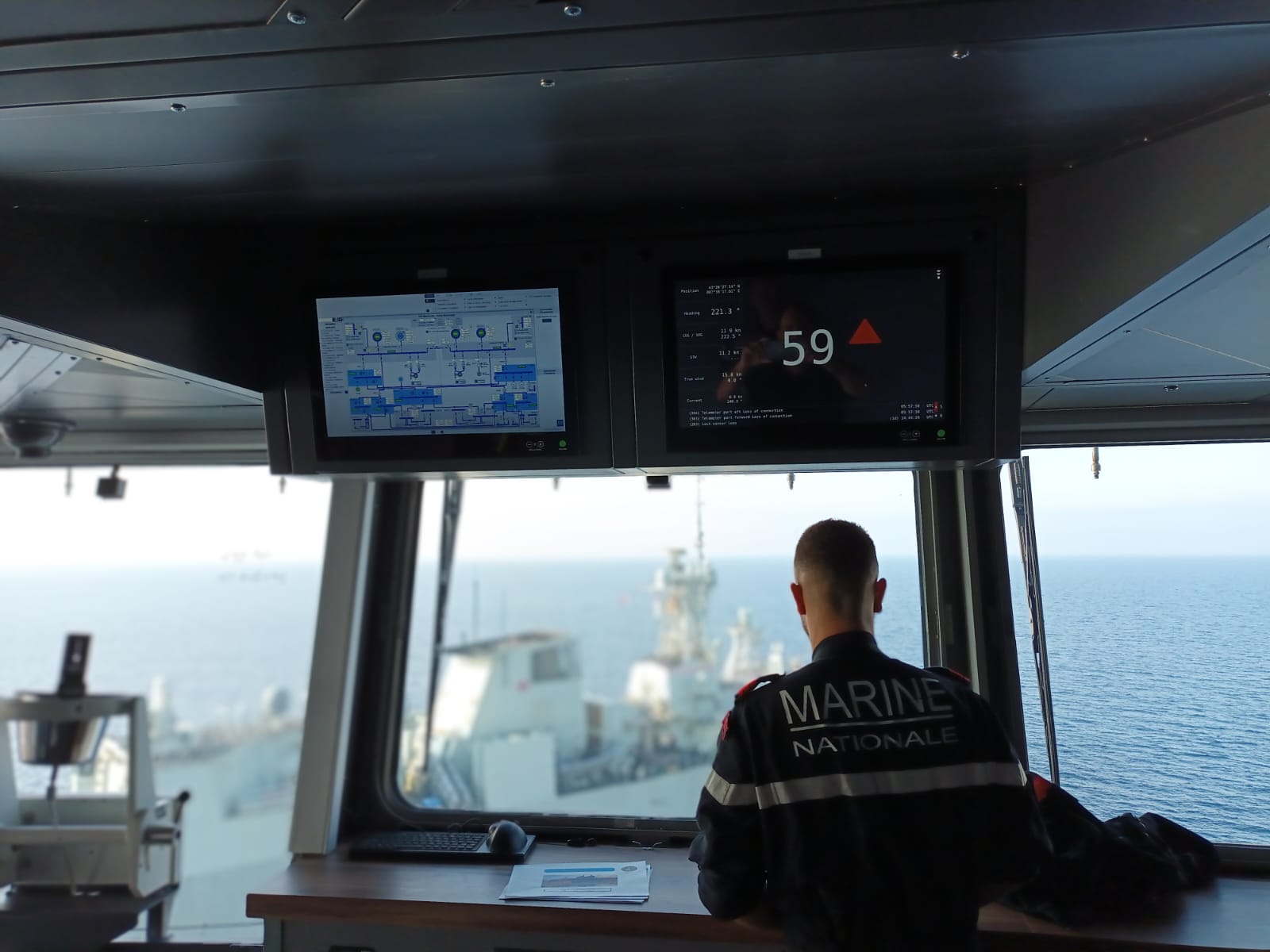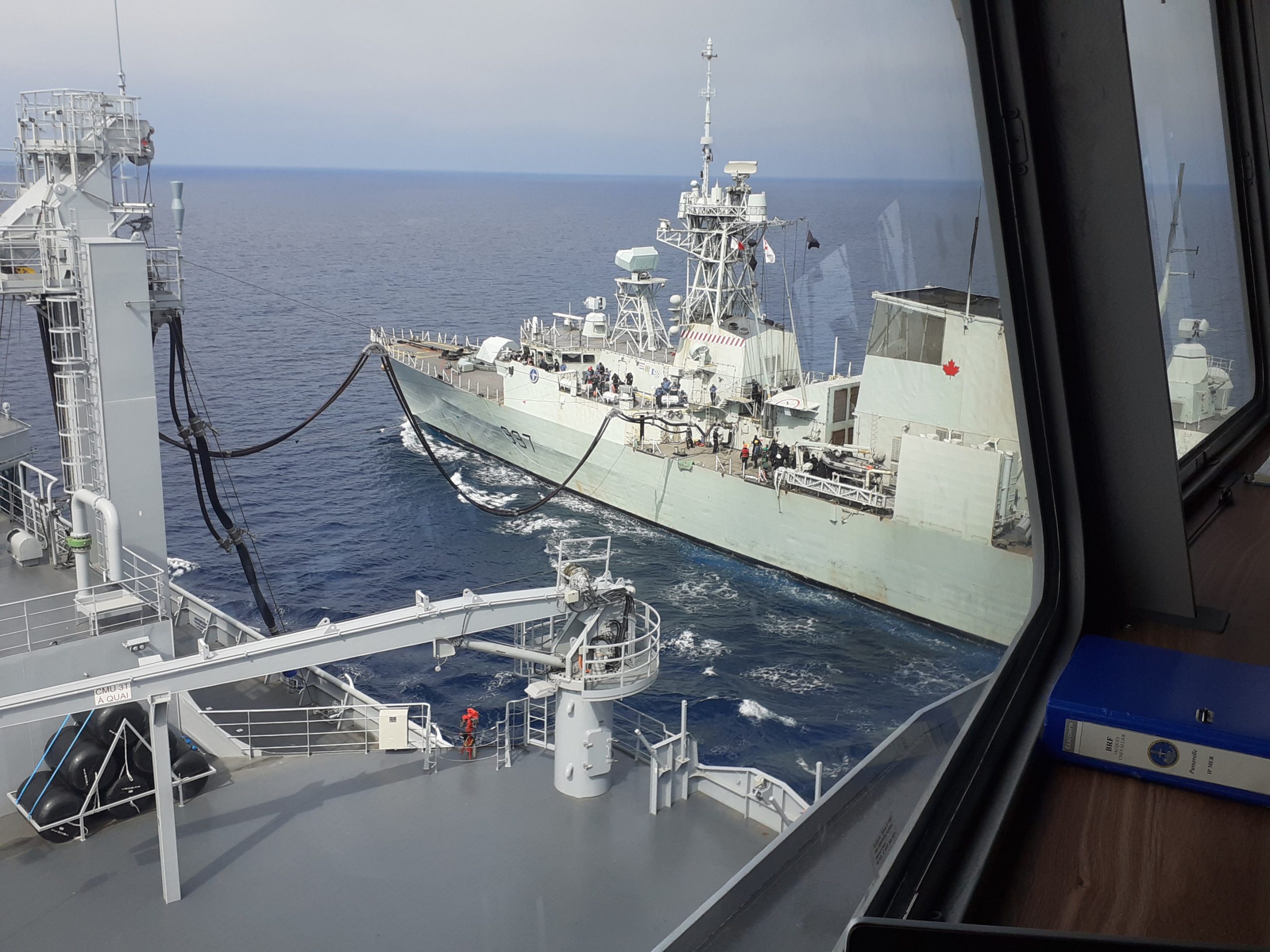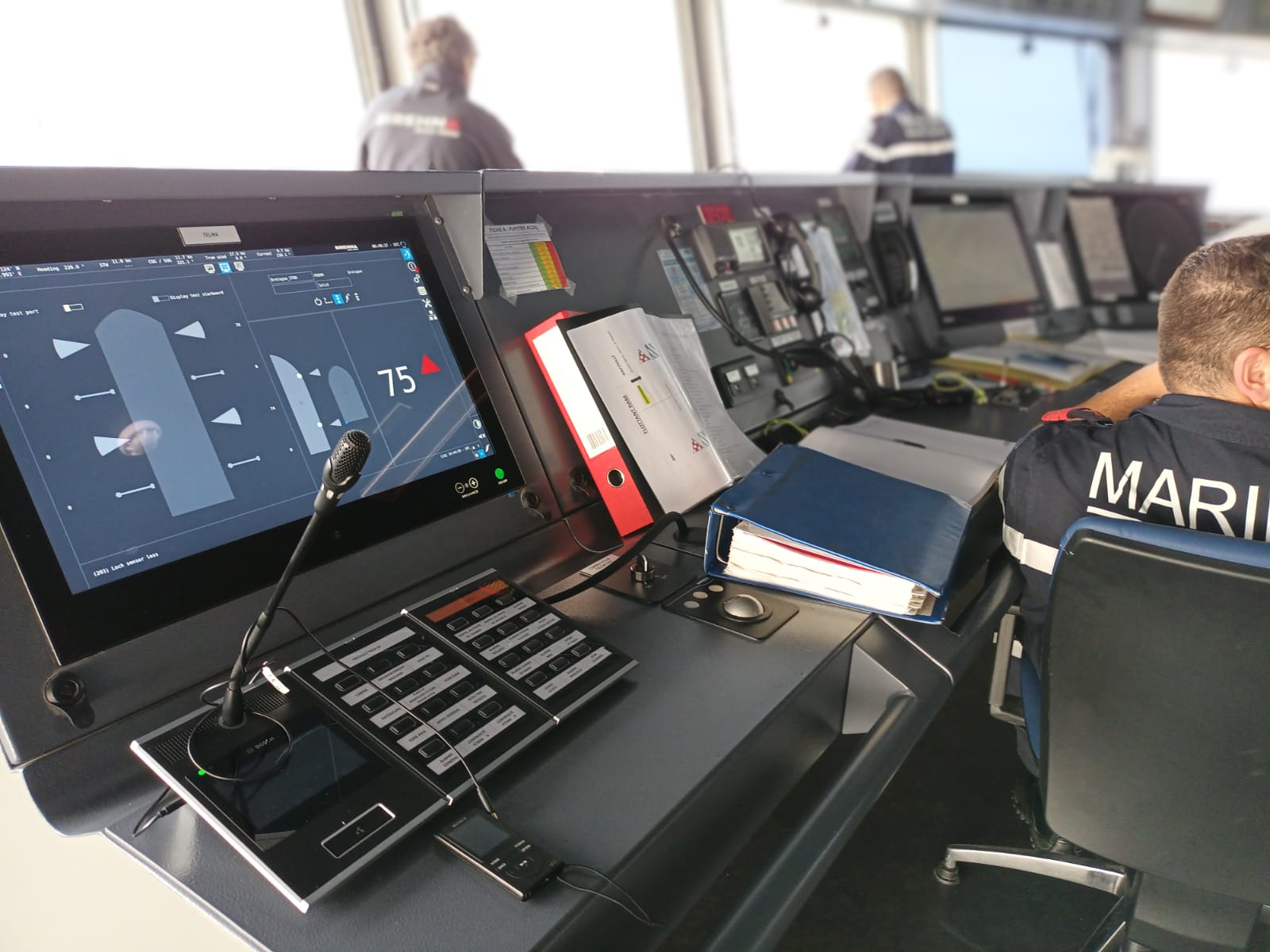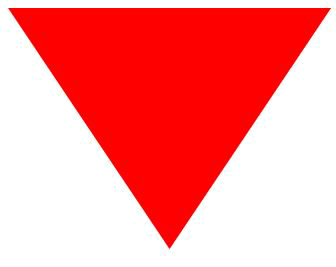
As part of the continuous evolution of replenishment at sea operations and the construction of replenishment ships (BRF), SIREHNA has been selected to develop an innovative system aimed at optimizing these strategic operations.
The TELMA project (Automated Replenishment Telemetry at Sea) was launched with the primary mission of significantly improving the efficiency and safety of replenishment between ships.
The construction of the four replenishment ships is part of the “Logistics Fleet” (FLOTLOG) program, which aims to replace the French Navy’s current single-hull replenishment oilers.
The program, contracted to a temporary business group formed by Chantiers de l'Atlantique and Naval Group, is being conducted in Franco-Italian cooperation under the aegis of OCCAR for the benefit of the French Directorate General of Armaments (DGA) and its Italian counterpart, NAVARM.
The historical background
Traditionally, replenishment at sea is carried out using a distance line (rope) marked with pennants. The distance between ships and their movements toward or away from each other are visually monitored by "counting" the pennants.
Although functional and robust against failures, this method involves the challenge of stretching a line from ship to ship and has limitations in terms of precision and responsiveness, particularly in adverse weather conditions or during complex maneuvers.

The main objective of TELMA
Contracted in 2021 under the FLOTLOG program, the system provides navigational assistance during the approach phase and throughout replenishment at sea (RAS) operations. The information is displayed to the ship’s crew from the bridge and to the replenished vessel through external displays.
The primary goal of TELMA is to modernize this approach by providing a clear and real-time display of distances and movement trends as the ships approach each other. This system aims to offer increased accuracy and simplify coordination between crews, thereby reducing the risk of human error and improving the efficiency of operations.
SIREHNA will deliver four TELMA systems for the following ships:
1. Jacques Chevallier
2. Jacques Stosskopf
3. Emile Bertin
4. Gustave Zédé
What the system is made of
The TELMA system is based on the integration of advanced sensors (radar rangefinder) and robust external displays. In line with the BRF’s capabilities, the system allows two ships to be replenished simultaneously, port and starboard, for both liquid and solid supplies.
The main components of the system are as follows:
1. Freeboard sensors:Installed on the ships, these 4 sensors continuously measure the exact distance between the ships. These radar telemeters provide accurate and reliable data, regardless of environmental conditions. They allow the detection of supplied ships during the approach phase up to 100m (supply operation between 40/50m), the RAM (Replenishment At Sea) phase and the distance phase.
2. External displays: Placed on the bow of the vessel, the 2 displays (port and starboard) show distance information and movement trends in real time. They enable the crews of supplied vessels to instantly visualize the situation and make appropriate decisions to adjust maneuvers.
3. Bridge control stations: There are 3 on the BRF navigation bridge, enabling the crew to check refuelling distances (port and starboard stations) and RAM configuration (main station).

Advantages & outlook
Implementing TELMA brings several major advantages:
- Increased accuracy: Electronic distance measurement eliminates the approximations inherent in traditional methods, right from the approach phase.
- Reactivity: Real-time information enables ships to react more quickly to changes in position, reducing the risk of collision or poor manoeuvring.
- Enhanced safety: By minimising human intervention and automating distance monitoring, TELMA helps to reduce the risk of accidents.
The TELMA project is part of a broader vision of modernizing and automating maritime operations. With its expertise in maritime engineering and automated systems, SIREHNA positions naval forces equipped with TELMA at the cutting edge of technology, ready to face new operational challenges.
The TELMA system represents a significant advancement in the field of replenishment at sea, transforming traditional methods into modern and highly efficient processes.
Thanks to SIREHNA, replenishment operations will become more precise, safer, and more responsive, marking a new chapter in maritime navigation history
